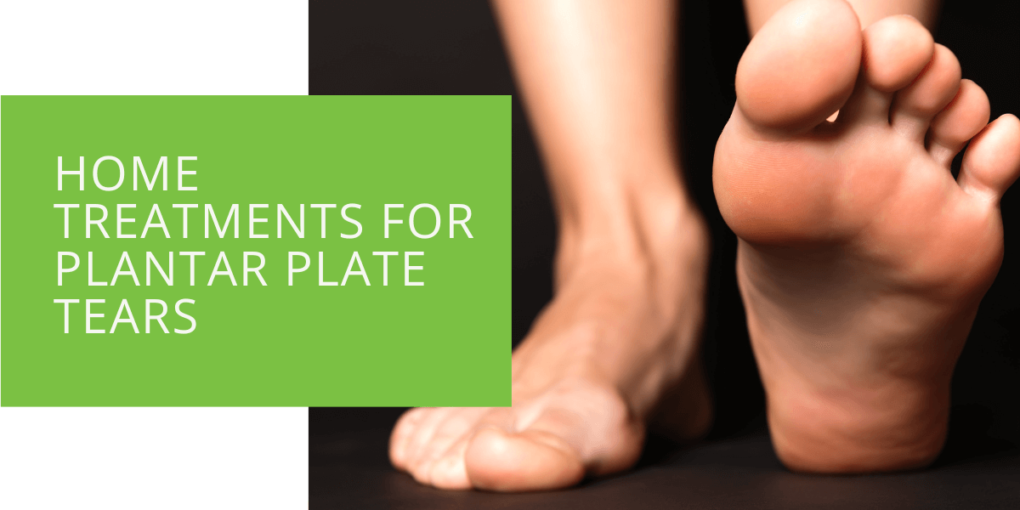Home Treatments for Plantar Plate Tears
Plantar plate tears can cause significant discomfort and affect foot and ankle health. If left untreated, they can lead to metatarsal deformities, ligament instability, and even dislocation of the second toe. However, with early intervention and appropriate home treatment, you can alleviate pain, promote healing, and prevent long-term complications. This article will explore various home treatment options for plantar plate tears, including exercises, footwear modifications, orthotic inserts, and restorative therapies.
Understanding Plantar Plate Tears
A plantar plate tear occurs when the strong ligament supporting the foot's metatarsophalangeal (MTP) joint becomes damaged or partially ruptured. This injury commonly affects the second toe and can cause pain, swelling, and a sensation of instability. It is often associated with conditions like hammertoe and neuroma.
Plantar Plate Tear Home Treatments
RICE Therapy: Rest, Ice, Compression, and Elevation
Rest is crucial for allowing the plantar plate tear to heal. Avoid activities that exacerbate pain or put excessive stress on the foot. Applying ice packs to the affected area for 15-20 minutes at regular intervals can help reduce pain and inflammation. Compression using an elastic bandage or compression sock can provide support and minimize swelling. Elevating the foot above the heart level can also help reduce edema and enhance the healing process.
Over-the-Counter Pain Relief
Over-the-counter nonsteroidal anti-inflammatory drugs (NSAIDs) such as ibuprofen or naproxen can effectively manage pain and reduce inflammation associated with plantar plate tears. However, it's essential to follow the recommended dosage and consult a healthcare professional if you have any underlying medical conditions or are taking other medications.
Stretching and Strengthening Exercises
Stretching exercises help improve flexibility and relieve tension in the affected area. Perform gentle stretches such as toe curls, toe pulls, and calf stretches to alleviate pain and prevent muscle imbalances. Strengthening exercises, like towel scrunches and marble pickups, can enhance foot stability and minimize the risk of future injuries.
Footwear Modifications
Modifying footwear can play a significant role in supporting the healing process of a plantar plate tear. Opt for shoes with a wider toe box to alleviate pressure on the affected area and reduce friction. Proper arch support can help distribute weight evenly and relieve ligament strain. Consider orthotic inserts that provide cushioning and stability, promoting proper alignment and preventing further damage.

Orthotic Inserts and Bracing
Orthotic inserts, such as metatarsal pads or arch supports, can be beneficial in relieving pain and reducing stress on the plantar plate. These inserts help redistribute pressure across the foot, supporting the affected area. In more severe cases, a brace or strapping may be recommended by a healthcare professional to immobilize the foot and facilitate healing.
Restorative Therapies
In addition to home treatments, several restorative therapies can aid in the healing process of plantar plate tears. These may include ultrasound, electrical stimulation, or laser therapy. Trained healthcare professionals typically perform these therapies and aim to reduce pain, promote tissue regeneration, and improve overall foot health.
When to Seek Professional Help
While home treatment options can be effective, knowing when to seek professional assistance is crucial. If your symptoms persist or worsen or you notice any deformities or dislocations, consult a podiatrist or foot and ankle specialist. Timely intervention can help prevent complications and ensure proper treatment and correction of underlying issues.
Conclusion
Understanding and addressing plantar plate tears is crucial for maintaining foot and ankle health. By implementing the appropriate home treatments, such as rest, ice, compression, elevation, over-the-counter pain relief, stretching and strengthening exercises, footwear modifications, and orthotic inserts, you can alleviate pain, promote healing, and prevent future complications.
While home treatments can be effective, it is important to seek professional help if your symptoms persist, worsen, or notice any deformities or dislocations. A podiatrist or foot and ankle specialist can provide a comprehensive evaluation, recommend advanced treatment options, and perform necessary interventions to ensure the best possible outcome.
By proactively preventing plantar plate tears, such as wearing proper footwear, performing regular exercises, and seeking early treatment for foot abnormalities, you can reduce the risk of this condition and maintain optimal foot health.
Always remember that the information provided in this article is for informational purposes only and should not replace professional medical advice. Consult a qualified healthcare professional for an accurate diagnosis and personalized treatment plan tailored to your needs. Taking care of your feet and ankles is essential for your overall well-being, so don't hesitate to prioritize your health and seek the help you need.

